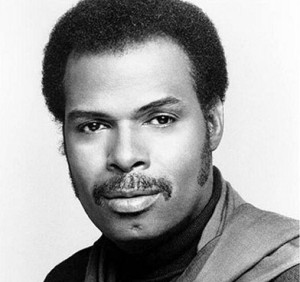 It’s ironic that I would be celebrating the life and music of a Houston native just one day after the Houston Astros eliminated my beloved Yankees from the playoffs. When did those Astros get to be part of the American League anyway? I hate this one-game playoff thing and I would have said that win or lose. It’s terrible for a team to have a successful 162-game season only to have it end as the result of one game. It doesn’t prove a thing. Oh well.
It’s ironic that I would be celebrating the life and music of a Houston native just one day after the Houston Astros eliminated my beloved Yankees from the playoffs. When did those Astros get to be part of the American League anyway? I hate this one-game playoff thing and I would have said that win or lose. It’s terrible for a team to have a successful 162-game season only to have it end as the result of one game. It doesn’t prove a thing. Oh well.
Leon Haywood came from Houston. He was born there in 1942 and he was already playing the piano by the age of three. Haywood started playing in bands when he was a teenager. Eventually he moved to Los Angeles, where he began to work with Big Jay McNeely. The sax player appreciated Haywood’s talent and set him up to record his first single. The instrumental “Without a Love” was released on a small label called Swingin’ Records.
Haywood’s next job was as a piano player for Sam Cooke, and he stayed in that chair until Cooke died in 1964. Setting out on his own again, Haywood put out two singles on Fantasy Records before moving on to Imperial Records. His single for Imperial, “She’s With Her Other Love,” hit the R&B chart in 1965. At this same time Haywood was part of a group of session players organized by the legendary DJ Magnificent Montague. That group had two instrumental hits, “Hole in the Wall” (as the Packers), and “Precious Memories” (as the Romeos).
Signed to Decca Records, Haywood finally had a solo hit with “It’s Got to be Mellow” in 1967. The record got to #21 on the R&B chart, had crossover success at #63 on the pop chart, and became a Carolina beach music classic. Haywood continued his role as a session player with the Packers, and also with Dyke & the Blazers while continuing to search for success as a solo artist. Another single, “Keep it in the Family” made it to #11 on the R&B chart, #50 on the pop chart, in 1968.
Haywood recorded for Columbia Records and MCA Records. When the ’70s came along and funk, followed by disco, became the thing, he adjusted his style to fit the new sounds. In 1974 he signed with 20 Century Records and had his biggest hit with “I Want’a Do Something Freaky to You” the following year. The record went to #7 R&B, and #15 pop. More hits followed including “Strokin’ (Part II)” in 1976, and “Party” in 1978. When disco began to fade, Haywood returned to the shuffle beat of early rock and roll for “Don’t Push It Don’t Force It” in 1980, a #2 R&B hit.
In 1981, Haywood scored a hit as a songwriter and producer with Carl Carlton’s “She’s a Bad Mama Jama” which Haywood produced in his studio. A few more minor hits followed for Haywood, and last R&B chart record, “Tenderoni,” made it to #22 in 1984. With his success as a recording artist in the rear view mirror, Haywood became an executive and producer at Edge Records in LA and later began producing blues records for his own label, Evejim Records.
By my count, Leon Haywood hit the R&B charts more than 20 times, to say nothing about his work as a session player, songwriter, and producer. His is certainly a career worth celebrating.






Comments